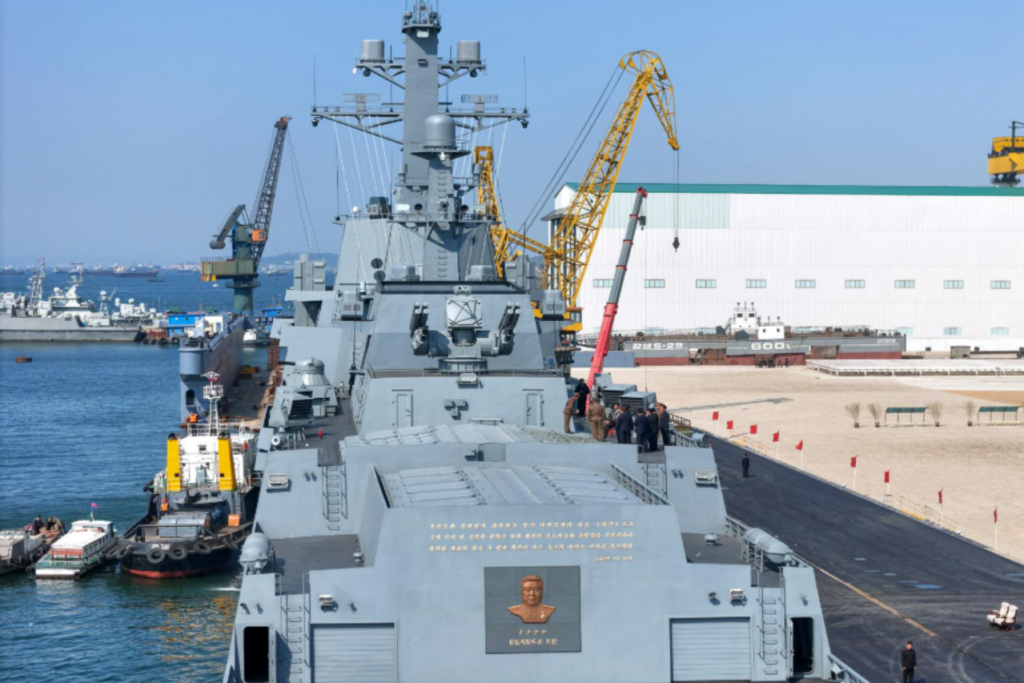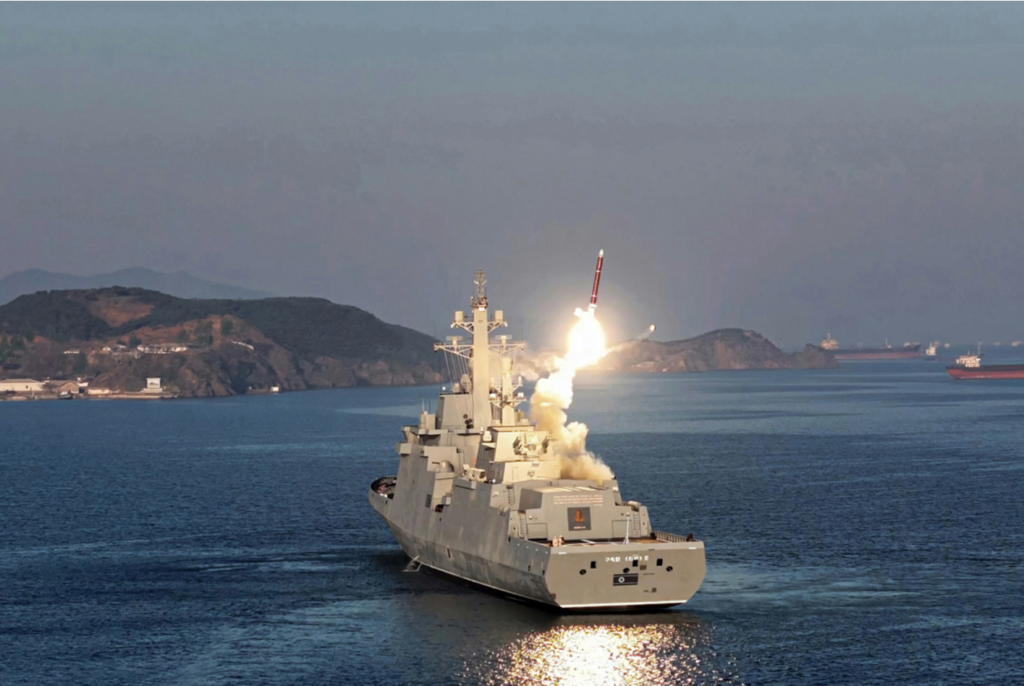North Korea Commissions Choe Hyon, Its Most Powerful Missile Destroyer Yet
North Korea has commissioned and inducted its most sophisticated surface combatant yet, the Choe Hyon, a multi-role missile destroyer with a capacity of 5,000 tons. The commissioning ceremony was conducted on April 25, 2025, at the Nampo Shipyard. It is named after General Choe Hyon, who was an anti-Japanese guerrilla and defense minister. The ship is a major upgrade to the capabilities of the Korean People’s Navy (KPN), the nation’s first blue-water-capable destroyer and its largest surface warship to date, with a length of 142 meters.

On April 28 and 29, Choe Hyon conducted its inaugural live-fire test in the presence of Kim Jong Un and his daughter Kim Ju Ae. North Korean state media witnessed successful supersonic and strategic cruise missile, anti-aircraft missile, and electronic jamming projectile launches as well as fire from the ship’s 127mm main naval gun. These tests validated its battle readiness. The destroyer has 74 vertical launch tubes in total, with 44 in the bow and 30 at the stern, all employing a cold-launch system. Released imagery suggests 32 bow cells will carry anti-aircraft missiles, 12 will carry cruise or anti-ship missiles, and aft launchers will carry Hwasal-2 cruise missiles, North Korea’s newest supersonic land-attack missile, and Hwasong-11 ballistic missiles. The ship has several launch points for the Kumsong-3 anti-ship, based on the Russian Kh-35.
During the commissioning ceremony, North Korea unveiled several of the vessel’s weapons systems, including the Hwasong-11 missile and a Russian Pantsir-M naval close-in weapon system (CIWS) with 57E6M missiles. The main gun is a locally produced 127mm naval cannon located ahead of the VLS array. It has optical and manual aiming with external ventilation. Close-range defense is provided by two AK-630 30mm cannons on either side and the aforementioned Pantsir-M CIWS located aft. Secondary armament comprises four quad-mounted Bulsae-4 anti-tank missile systems and assorted decoy launchers. Anti-submarine warfare is enabled by two sets of dual torpedo tubes and bow-mounted sonar. While no towed sonar array has been sighted or reported, onboard systems imply the possible addition of Soviet-era RPK missile systems, allowing the vessel to conduct long-range torpedo or nuclear depth charge attacks.

In terms of sensors and electronics, the Choe Hyon has a 360-degree phased-array radar, two Russian-style fire-control radars, an MR-36-series air and surface search radar, standard navigation and IFF (Identification Friend or Foe) systems, and electronic-warfare antennas. Precise guidance techniques for its missile systems are not apparent, but radar-integrated or active-seeker technologies are probable. The ship is powered by conventional diesel turbines, with bow thrusters as auxiliary units to help maneuver in harbor spaces. There is no specialized aviation hangar or flight deck, limiting its capacity to operate helicopters, but providing more VLS space.
The Choe Hyon has been assigned to the KPN’s Eastern Fleet, which operates in waters adjacent to Japan. Vice Admiral Pak Kwan Sop accepted the vessel’s flag during the handover ceremony. A second destroyer of the same class is currently under construction at the Cheongjin Shipyard. It is estimated the class could carry up to 80 missiles, representing a major increase in the volume and reach of North Korea’s naval strike capabilities.

